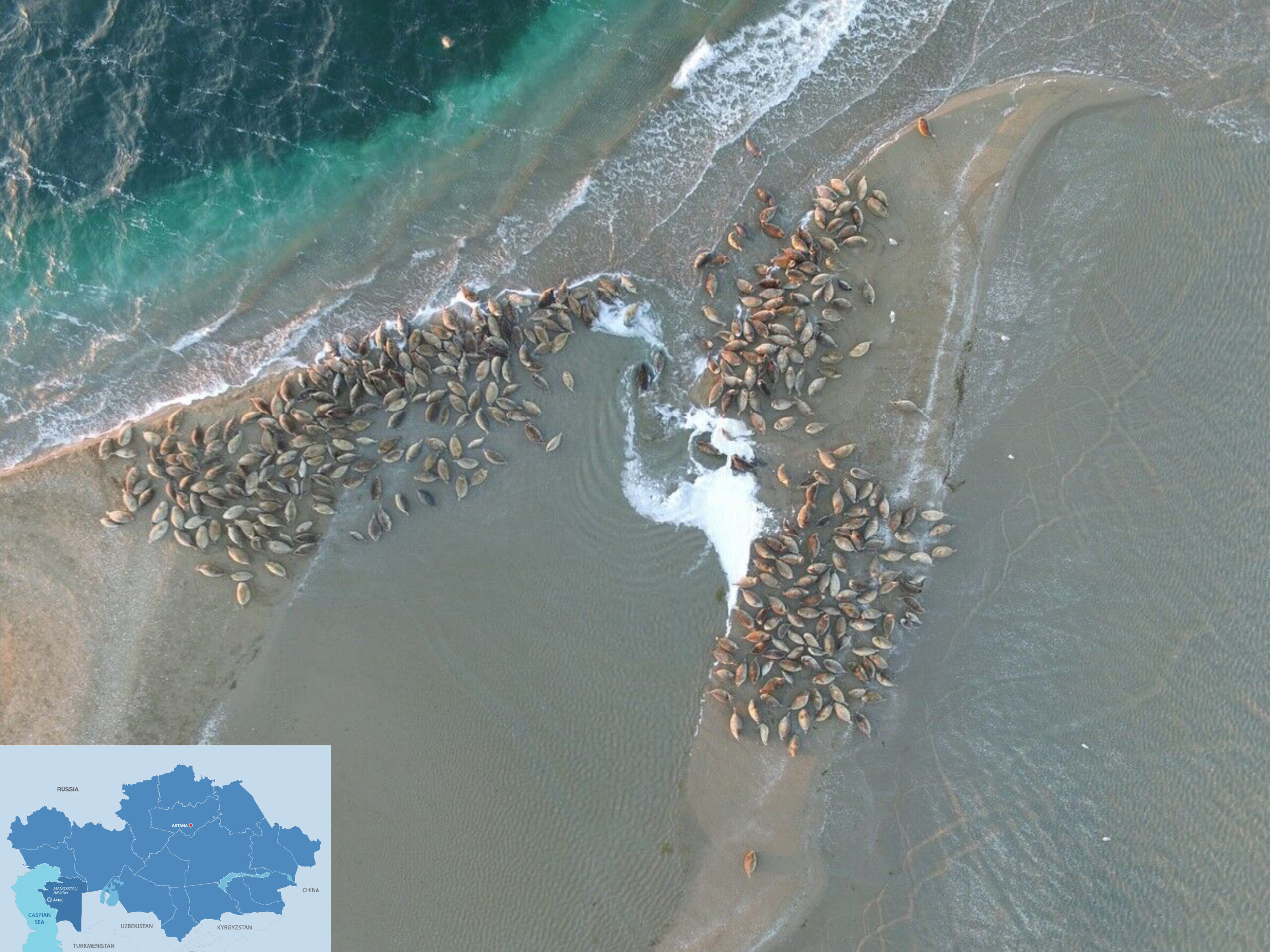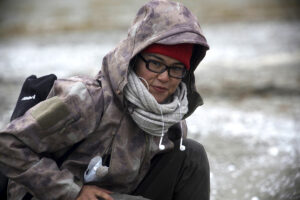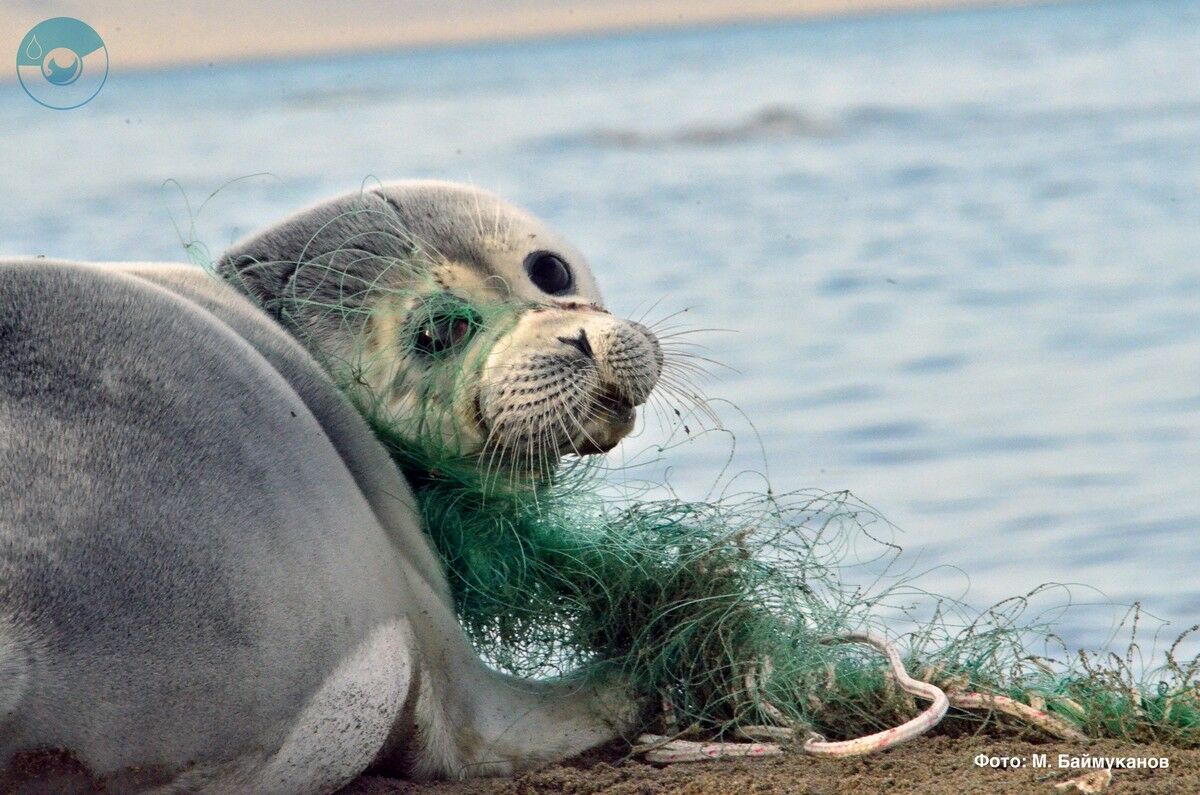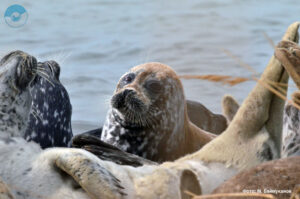ASTANA – The Institute of Hydrobiology and Ecology has recently released “On the Shoals of the Caspian Sea, the Call of the Seals” documentary, featuring the lives of researchers as they navigate the challenges of studying Caspian seals. The film captures the scientists’ search for seal rookeries across the vast Caspian, their aerial surveys, and the meticulous data analysis that informs conservation efforts.

Island in Kenderli Bay. Photo credit: ihe.kz Click to see the map in full size. The map is designed by The Astana Times.
Beyond showcasing the seals’ behavior, the documentary highlights the dedication, passion, and perseverance of the researchers committed to their protection.
In an interview with The Astana Times, Assel Baimukanova, a researcher at the Institute of Hydrobiology and Ecology, discussed the film, the effects of environmental changes on Caspian seals, and the importance of conservation efforts.
A hub for seal research and its challenges
Based in Almaty, the institute has long been at the forefront of Caspian seal research. Scientists at the institute conduct extensive studies on seal populations, age dynamics, and dietary habits. Their work contributes to the broader goal of protecting and restoring the species.

Assel Baimukanova, a researcher at the Institute of Hydrobiology and Ecology. Photo credit: Baimukanova’s personal archieve
“We are engaged not only in scientific research but also in educational initiatives. As part of our outreach efforts, we create films, nine documentaries have already been released about the Caspian seal. We also develop conservation recommendations and work closely with local communities to raise awareness about this unique animal,” said Baimukanova.
Baimukanova explained that the latest film sheds light on the obstacles Kazakh researchers face in harsh conditions. A major concern is the regression of the Caspian Sea, which forces scientists to track the shifting rookeries that are gradually moving westward.
“This documentary took a long time to produce because we wanted to highlight not only the seals but also the work of Kazakh researchers—their challenges, struggles, and small victories,” she said. “Working at sea is unpredictable. Sometimes we set up camp only to find that the water has receded, forcing us to wait or relocate to another island. Our expeditions are filled with obstacles, from boats getting stuck in shallow waters to discovering new shoals near the Seal Islands—an exciting yet unpredictable process.”
The film, available in English and Russian, captures the full spectrum of scientific exploration, blending rigorous research with deeply personal moments of discovery and hope.
“It highlights our scientific research, our concerns, and our hopes for the future. The film also captures the excitement of discovering new rookeries, reinforcing our belief that we can create conditions for the seals to thrive,” said Baimukanova.
Personal connection
For Baimukanova, studying Caspian seals is more than just a job, it is a lifelong passion.
“Seals are mysterious and fascinating creatures. They are curious, intelligent, and incredibly aesthetic in their movements. Observing their behavior is central to my research, and many of these observations are included in our films, providing a scientific foundation for our storytelling,” she said.

Plastic pollution endangers seal populations. Photo credit: ihe.kz
Encounters with these animals often leave her with mixed emotions.
“I feel admiration, but also shame at times. In places like Kenderli Bay, boats frequently disturb the seals, sometimes passing dangerously close to their rookeries or firing at waterfowl. Plastic pollution is another heartbreaking issue,” said Baimukanova.
Reflecting on years of research, Baimukanova recounted one particularly memorable encounter: “During an expedition, I lay on a rookery where seals had previously rested. Suddenly, I noticed a few seals trying to climb onto the same spot, seemingly mistaking me for one of their own. I had a lot of different emotions, from admiration to surprise to the desire to become a part of them.”
The urgency of conservation efforts
Climate change and human activity pose significant threats to Caspian seals, Baimukanova warned.

Photo credit: ihe.kz
“Seals breed on the ice of the northern Caspian, but with warmer winters becoming more frequent, we are facing a critical question ‘Can the species adapt to these changes and survive?’ Additionally, human impact from pollution and oil extraction to fishing nets, poaching, and unregulated tourism continues to endanger seal populations,” she said.
Baimukanova highlighted that the sea itself is shrinking due to decreased inflow, and as a closed basin, pollutants accumulate rapidly. These challenges require immediate action. She believes that one of the most crucial measures is the establishment of a state nature reserve.
“As the sea regresses, seals lose their traditional habitats. However, new islands are forming, and it is crucial that they remain safe for the seals. We have developed an action plan outlining the necessary steps, and we hope it will be approved at the government level. The plan is backed by years of research and must be implemented to ensure the survival of this species,” she added.


